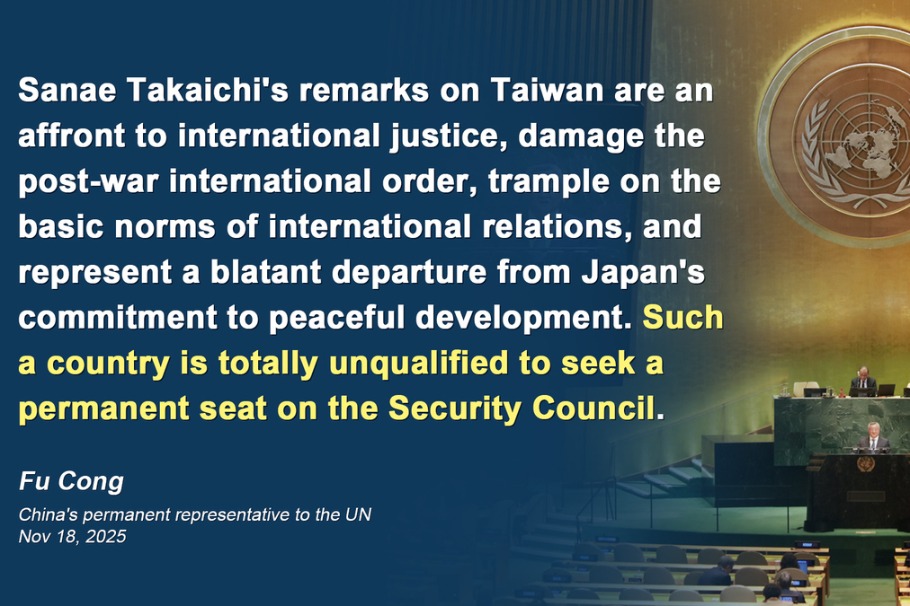US trade case against China very weak

On the surface, US Trade Representative Robert Lighthizer appears to have made an ironclad case against China in the so-called Section 301 report issued on March 22. Laid out in a detailed 182-page document (which, with 1,139 footnotes and five appendices, would make any legal team blush with pride), the USTR's indictment of China on charges of unfair trading practices regarding technology transfer, intellectual property, and innovation seems both urgent and compelling.
It has quickly been accepted by many as foundational evidence in support of the tariffs and other punitive trade measures that the Donald Trump administration has initiated against China in recent months. It is powerful ammunition in a potential trade war.
But don't be fooled. The report is wide of the mark in several key areas. First, it accuses China of "forced technology transfer", arguing that US companies must turn over the blueprints of proprietary technologies and operating systems in order to do business in China. This transfer is alleged to take place within the structure of joint-venture arrangements-partnerships with domestic counterparts which China and other countries have long established as models for the growth and expansion of new businesses.
Currently, there are more than 8,000 joint ventures operating in China, compared to a total of over 110,000 joint ventures and strategic alliances that have been set up around the world since 1990.
US firms are not innocent victims
Significantly, US and other multinational corporations willingly enter into these legally-negotiated arrangements for commercially sound reasons-not only to establish a toehold in China's rapidly growing domestic markets, but also as a means to improve operating efficiency with a low-cost offshore Chinese platform.
Portraying US companies as innocent victims of Chinese pressure is certainly at odds with my own experience as an active participant in Morgan Stanley's joint venture with the China Construction Bank (and a few small minority investors) to establish China International Capital Corporation in 1995.
Yes, as we joined with our partners in creating China's first investment bank, we shared our business practices, proprietary products, and distribution systems. Yet, contrary to the assertions of the USTR, we were hardly forced into these arrangements. We had our own commercial objectives and wanted to build a world-class financial services company in China.
By the time we sold our stake in 2010-at a rather attractive return to Morgan Stanley shareholders, I might add-CICC was well on its way to attaining those goals.
The second area where the USTR's Section 301 report is problematic is its portrayal of China's focus on outward investment-its "going out" strategy-as a unique State-directed plan aimed at gobbling up newly emerging US companies and their proprietary technologies. In fact, the report devotes more than twice as many pages to charges concerning China's supposed external technology theft via such acquisitions-which are framed as a blatant grab for the United States' most precious assets-as it does to internal transfers through joint ventures and alleged unfair licensing practices.
'Socialist plot' common among developed nations
As such, the Made in China 2025 campaign is presented as prima facie evidence of a devious "socialist plot" to attain global dominance in the great industries of the future: autonomous vehicles, high-speed rail, advanced information technologies and machine tools, exotic new materials, biopharma and sophisticated medical products, as well as new power sources and advanced agricultural equipment.
Never mind that industrial policies are a time-tested strategy for developing countries seeking to avoid the dreaded middle-income trap by shifting from imported to indigenous innovation. China is accused by the USTR of sponsoring a unique strain of State-directed, heavily subsidized industrial policy unfairly aimed at snatching competitive supremacy from free and open market-based systems such as the US, which are supposedly playing by different rules.
Yet even developed countries have relied on industrial policy to achieve national economic and competitive objectives. It was central to Japan's so-called planned rational development state, which underpinned its rapid growth in the 1970s and the 1980s. The Japanese Ministry of International Trade and Industry perfected the art of state-subsidized credit allocation and tariffs to protect Japan's sunrise industries, an effort that was matched by Germany's equally impressive Wirtschaftswunder, augmented by strong support for the Mittelstand of small and medium-size enterprises.
And, of course, it was US President Dwight Eisenhower who in 1961 drew attention to America's powerful military-industrial complex as the linchpin of state-sponsored, taxpayer-funded innovation in the US.
NASA-related spinoffs, the internet, GPS, breakthroughs in semiconductors, nuclear power, imaging technology, pharmaceutical innovations, and more are all important and highly visible manifestations of industrial policy the US way. Washington simply does it through its federal defense budget-where outlays of close to $700 billion this year are more than the combined total earmarked for defense in China, Russia, the United Kingdom, India, France, Japan, Saudi Arabia and Germany.
USTR's tech-policy claim grossly wrong
Yes, the USTR is entirely correct in underscoring the role that innovation plays in shaping any country's future. But to claim that China alone relies on industrial policy as a means toward this end is the height of hypocrisy.
Cyberespionage is the third leg of the stool in the USTR's case against China. In this area, there can be no mistaking the evidence underscoring the role played by China's People's Liberation Army. Unfortunately, the evidence cited in the USTR report in support of cyber-related trade violations largely predates that confrontation.
In short, the USTR's seemingly impressive Section 301 report is a biased political document that has further inflamed anti-China sentiment in the US. As a result, Chinese-sponsored intellectual property theft is now taken as a given by a US which increasingly sees itself as a victim. Yes, like the rest of us, the Chinese are tough competitors and may not always play by the rules. For that, they could be held accountable. But the USTR case is an embarrassing symptom of a scapegoat mentality that has turned the US into a country of whiners.
The author, a faculty member at Yale University and former chairman of Morgan Stanley Asia, is the author of Unbalanced: The Codependency of America and China. Project Syndicate


































